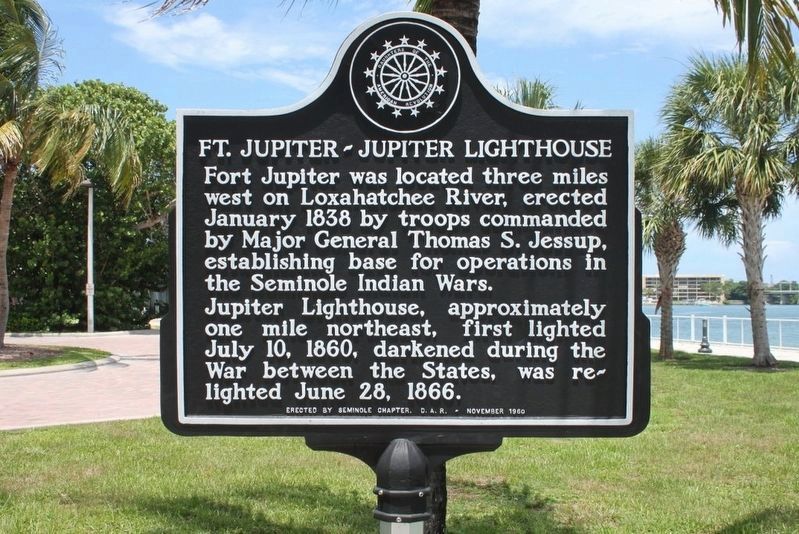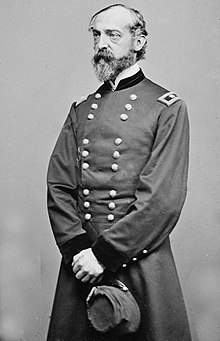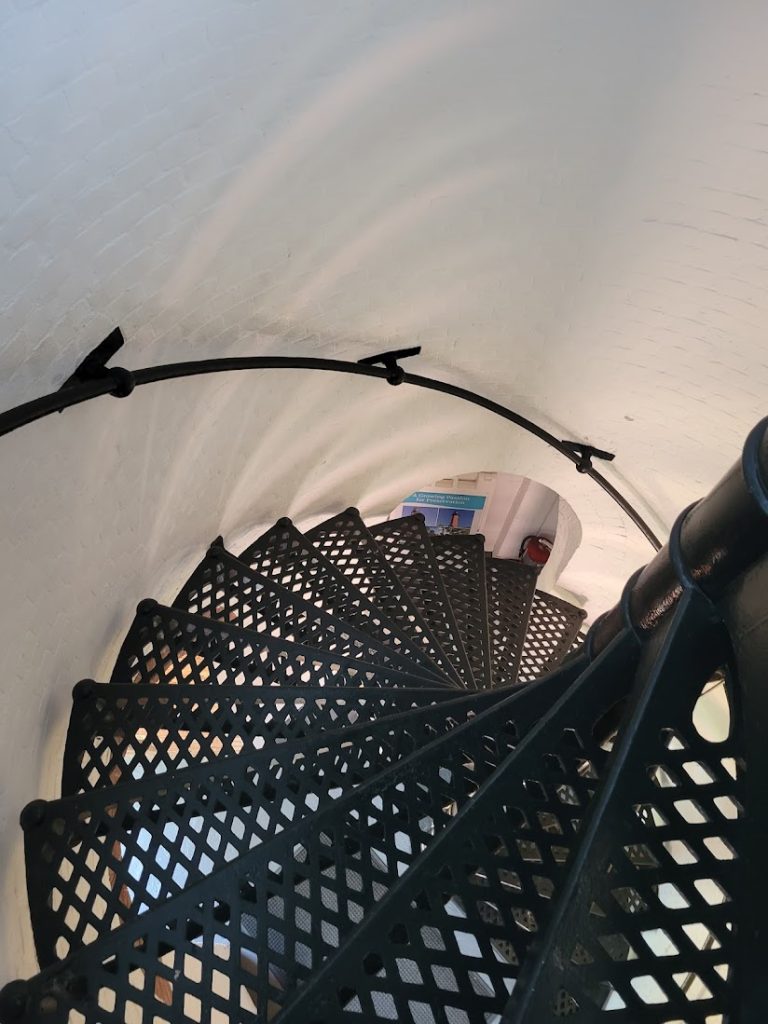Jupiter Inlet Lighthouse: Standing the Test of Time
My grandmother, whom is still with us, just celebrated her 90th birthday. We were talking and it is quite fascinating just how much she has seen growing up in a post Great Depression era until the present day. How times have changed, how society has changed, advancements in technology and transportation, she has certainly seen a big piece of our history and evolution as a nation. I can only imagine, if it could talk, what the Jupiter Lighthouse would have to say about what it has seen in its’ 162 years of existence and being the oldest structure in Palm Beach County.
As you may have noticed the names of Florida cities, towns, streets, rivers, lakes and even sports teams, are all heavily influenced by the first inhabitants of the land long before Spanish and the eventual English explorers settled into the area. Early Spanish explorers called the native Floridians who once lived in Northern Palm Beach County “Jobe” and Jeaga and the name has been spelled in various forms: Hobe, Yobe, Jove, Jobe. Both Jupiter (Jove and Jupiter refer to the same god in ancient mythology) and Hobe Sound, a smaller town just north of Jupiter, are derived from these early terms.

The area of land the Jupiter Lighthouse sits on today was once thought to be an Indian shell mound (Midden) or has been falsely rumored to be a burial mound. While the Jupiter Lighthouse does sit on a mound, it is a naturally occurring one consisting of sand and shells. There is however, on the opposite side of the inlet across from the lighthouse, an Indian midden called the Jeaga Shell Mound which was a trash heap comprised of shells and other refuse discarded by Jeaga. This mound was later built upon by early pioneers in 1898. The DuBois Pioneer Home is one of the last remaining historic homesteads of its type in Northern Palm Beach County and is open for tours.

However, the point of land which sits at the junction of the Indian River and Jupiter Inlet was in fact, for thousands of years, a meeting place for the ancient Indian tribes. It would be much later, in 1849, surveyors for the U.S. Army took notice of this area of land and recommended the inlet area as the perfect spot for military defenses as Fort Jupiter was situated nearby. In 1854 President Franklin Pierce signed over the order to set aside 61.5 acres of the 9,088 acre Fort Jupiter Reservation for a lighthouse. It wouldn’t be until 1925 when it would be discovered that the 61.5 acres was actually 113.22 acres

First conceived in 1851 and approved by Congress in 1853, the lighthouse would have to wait until July 10, 1860 to light up for the first time due to multiple building interruptions. As it has been discussed in my other articles History: Lake Worth Lagoon and Lake Worth Inlet: Engineering Against Mother Nature, during construction in 1854, the Lake Worth Inlet silted shut forcing construction equipment and materials to be shipped down the Indian River in light boats which added significant delays to the project and the stagnate waters became a breading ground for malaria. Then from 1856-1858, the project was interrupted once again due to the Third Seminole War. Work finally got underway in January 1859 but the climate and logistical difficulties caused construction to proceed slowly. The majority of the work performed on the lighthouse was done from January 1860 and completed within 5 months.

The Jupiter Lighthouse was originally designed by then Lieutenant, George G Meade aka ” Old Snapping Turtle” of the Bureau of Topographical Engineers. Meade was a seasoned United States Army Officer and civil engineer best known for his decisive defeat of Confederate General Robert E. Lee at the Battle Of Gettysburg in the American Civil War just a few years after the lighthouses’ construction.

Lt. William F Raynolds then modified the blueprint designs of the lighthouse by adding a double wall construction to enhance its durability and strength while also incorporating a First Order Fresnel Lens, the biggest, brightest and best of its kind for the period. Raynolds, like Meade, had an impressive and expansive career as an officer in the U.S. Army, serving in the Mexican-American War and American Civil War. He was an American explorer and the Jupiter Lighthouse was one of many such projects while assigned to the Bureau of Topographical Engineers that later merged with the Army Corps of Engineers. At least 6 lighthouse projects Raynolds was part of are still standing today. While Raynolds was working on the Jupiter Lighthouse, he was pulled off the project and reassigned to lead the first U.S. Government sponsored exploration of the Yellowstone region leaving completion of the project in the hands of Captain Edward A. Yorke, whom completed the lighthouse in 1860 at a cost of $60,000 or roughly $2.15 million today.

Comprised of double brick masonry walls, the outer conical wall tapers from 31.5″ (8 bricks thick) at the base to 18″ (3 bricks thick) at the base of the lantern. The inner wall is cylindrical and two bricks thick throughout. While exact numbers are not known, it is estimated that around 500,000 bricks were used to construct. The lighthouse itself is 108 ft. tall and sits upon a 48 ft. natural mound, making the overall height of 156 ft. If you want to climb to the top, you’ll have overcome the 105 counterclockwise spiraling, cast iron steps, all but 5 being the originals.


Still in use today is the First Order Fresnel Lens, at over 12ft tall, was paired with a Meade or Funck hydraulic lamp with 5 concentric wicks. The lens itself cost over $5000 or a little over $168k today and is thought to be the oldest Fresnel lens in Florida. Wale oil first powered the lamp and was later changed to Lard Oil after the Civil War which left the lighthouse out of service from 1861 to 1866. Surprisingly enough, a man by the name of Augustus Oswald Lang whom was the assistant lighthouse keeper at the time, sided with the South during the war in 1862, later to be wanted for desertion in 1863. He along with some of his Confederate backed loyalists took control of the lighthouse and dismantled it for the duration of the war. During the wars, lighthouses were often times disassembled and the parts destroyed rendering them useless as a means of tactical advantage. Luckily for the Jupiter Lighthouse, Lang understood the immense value of the light mechanism and simply disassembled the parts and hid them. All the parts were found and after the war, the lighthouse was put back into service. Lang would become known as being responsible for the transformation of Lake Worth Lake into Lake Worth Lagoon paving the way for the current Lake Worth Inlet and Port of Palm Beach area.


As technology changed, so did the lighting method of the lighthouse. An incandescent oil vapor lamp replaced the hydraulic lamp in 1909. In 1928 the lighthouse was electrified and three, 250 watt lightbulbs all in a row were installed along with a 1/3 horsepower motor to turn the lens carriage with a second motor as a backup. Prior to a electric motor which would turn the lens one complete rotation every 60 seconds, a system of clockwork gears, cable and weights were used very much like a supersized grandfather clock. The weights used, descended through a drop tube in the walls. As the weights unwound and dropped lower and lower into the tube, this mechanical advantage kept the gears spinning which rotated the lens around the flame. The variable weights of 100-250 pounds had to be hand cranked back up at least once every 6 hours to keep the movement going and the lens spinning correctly. Imagine needing to wind your watch up at least 4 times a day to keep proper time. Upgraded again in 1966, a CG2P lamp changer using 120v, 1000 watt GE quartz-iodine bulbs (one active, one backup), were put into service and can be seen 24 miles out to sea or about 40-50 miles if in an airplane.
It would then be on June 8th 1987 that the lighthouse became fully automated with the addition of a photoelectric cell that would power on the light and motor at sunset and turn off at sunrise. The Jupiter Lighthouse flashes for 1.2 seconds, eclipses (darkens) for 6.6 seconds, flashes for 1.2 seconds, eclipses for 21 seconds and then repeats the cycle. Its important to note that the bulbs, just like the oil lamps, do not actually blink. It is the rotation of the lens that causes the bursts of lights to be perceived as flashes. And like all lighthouses that have very distinct Daymark characteristics for the Aid in Navigation during the day time by mariners the Jupiter Lighthouse is and always will be red with a black lantern.

From 1860 to 1939, more than 70 different lighthouse keepers have served at the Jupiter Lighthouse with the most important job of keeping the oil filled and the turning mechanism wound. In 1939, the civilian Lighthouse Service merged with the U.S. Coast Guard, and military personnel remained keepers of the lighthouse until its full automation in 1987. The lighthouse has undergone various renovations to keep the historical marker open to the public and an active public Aid to Navigation as 1 of only 13 active First Order Fresnel lenses in the entire United States. The lighthouse is currently under the great management and care of Loxahatchee River Historical Society, a 501(c)3 nonprofit organization incorporated in 1972 and opened the lighthouse museum the following year in 1973. Through a long term lease with the U.S. Coast Guard, LRHS has served as the Lighthouse Operations Manager since 1994. Click here for a timeline of the lighthouse history.

From 1860 to 1939, more than 70 different lighthouse keepers have served at the Jupiter Lighthouse with the most important job of keeping the oil filled and the turning mechanism wound. In 1939, the civilian Lighthouse Service merged with the U.S. Coast Guard, and military personnel remained keepers of the lighthouse until its full automation in 1987. The lighthouse has undergone various renovations to keep the historical marker open to the public and an active public Aid to Navigation as 1 of only 13 active First Order Fresnel lenses in the entire United States. The lighthouse is currently under the great management and care of Loxahatchee River Historical Society, a 501(c)3 nonprofit organization incorporated in 1972 and opened the lighthouse museum the following year in 1973. Through a long term lease with the U.S. Coast Guard, LRHS has served as the Lighthouse Operations Manager since 1994. Click here for a timeline of the lighthouse history.


